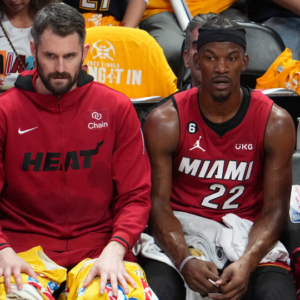The “Russian Doll” personality may not be a role model for young tennis players to learn from, but her thorny will is the desire of many.

Ahead of the 2018 Australian Open, Reddit ran a game in which the first person to give an answer had to come up with the most interesting question to answer it. One user started with, “All four of us.” The most popular response was, “How many people were cheering for Maria Sharapova in the stands during the first round of the Australian Open?”
Not only on social media, Sharapova was also shunned and openly hated by her colleagues. They criticized the Australian Open organizers for letting Sharapova hold the championship trophy next to Roger Federer at the draw ceremony. Their argument was that the player who had to take a 15-month break for doping was not worthy of the Cup. Eugenie Bouchard even insulted Sharapova as a “cheat”.

“We wanted a former champion to present the Cup,” explained tournament director Craig Tiley. “Fortunately, Sharapova accepted the offer. She broke the rules, but she has had enough punishment.” Tiley was understandably upset, as Sharapova was the only Australian Open champion competing this year. But the anger from the media, fans and other players was not appeased.
Sharapova was born in April 1987, a year after the Chernobyl disaster in Russia . Yuri and Yelana Sharapov had to evacuate shortly after their only daughter was born, fearing the aftereffects of the explosion. Many suspect that the effects of Chernobyl altered Sharapova’s genetic makeup, making her unusually tall, as no one in her family was 1.88m tall like her. But it is certain that her unflattering personality was tempered by the pressures of her father Yuri.
Sharapova made her professional debut at the Sarasota tournament in Florida in 2001, when she was just 14. After seeing her daughter eliminated in the first round, Sharapova’s father stormed onto the court and began cursing at his opponent. That wasn’t the only time Yuri had gotten into trouble in front of the crowd while his daughter played.
At the 2004 WTA Tour Championships, Sharapova came from behind to defeat compatriot Anastasia Myskina 2-6, 6-2, 6-2 in the semifinals. After the match, Myskina spoke out against Yuri: “He kept yelling and giving Sharapova tactical instructions. I was afraid he would jump onto the court.” In the final, Sharapova continued to come from behind and defeated Serena Williams 4-6, 6-2, 6-4, while Yuri remained the same.

That pattern can be seen in Sharapova. Despite being consistently ranked among the top players in the world, Sharapova did not compete in the Fed Cup women’s team tournament until 2007, largely because of opposition from her teammates. In the 2007 final, Sharapova appeared as a supporter for her teammates, despite not being eligible to compete because she had not played in the previous rounds. But one member of the Russian team suspected that she was doing it to earn a ticket to the 2008 Beijing Olympics. “She said she wanted to train with us. But if she can’t compete, why train with us?” asked 2004 US Open champion Svetlana Kuznetsova.
Sharapova was not welcomed back to Russia. In the US, she also became a thorn in the side of fans with her statements aimed at Serena Williams. “I saw Serena crying after losing the 2004 Wimbledon final. She never forgave me,” Sharapova wrote in her autobiography. That was just the beginning of criticism aimed at the Grand Slam legend.
Americans believe Sharapova is obsessed with Serena. In a video interviewing female tennis players about their toughest opponent in their careers, they all agreed: “Serena”. Sharapova – who has lost to Serena 19 times out of 21 – replied: “Monica Seles”. Seles is undoubtedly one of the icons of tennis, but the two have only met once, and Sharapova was only 15 at the time.
Serena often organizes parties with colleagues, but never invites Sharapova to attend.

Despite the gossip, in Sharapova’s mind there are probably only two words: Success .
Her talent was evident at the age of 6. And for their daughter’s career, Yuri and Yelena ran around, saved money and packed their bags to cross the Atlantic to Florida. Visa problems prevented Yelena from accompanying her father and daughter until 2 years later. Not knowing English, Yuri still had to work hard to help Sharapova study at the IMG center of veteran coach Nick Bollettieri. Yuri was willing to take any job, even if it was low-paying, including washing dishes. Understanding the hardship but resilience of her parents, Sharapova had a budding will to win at all costs.

While her career was soaring in her twenties, Sharapova suffered a serious shoulder injury. No one had ever returned to competition with such a severe shoulder injury, but Sharapova refused to give up. Without a win in the last two months of 2007, she still surprisingly defeated Lindsey Davenport and Justin Henin to win the 2008 Australian Open.
After regaining her world number one ranking, Sharapova suffered a relapse. She suffered a major tear in her shoulder muscle in April 2008, but it wasn’t discovered until August. For four months, Sharapova had to play through the pain. Returning to Roland Garros after surgery, she moved fans by reaching the quarterfinals, only to be stopped by Dominika Cibulkova. Sharapova’s serve, which had always been her strength, became a liability.

Sharapova was first signed by Nike when she was just 11 years old. After winning Wimbledon in 2004, a series of famous brands rolled out the red carpet to invite the “Russian Doll” to be their representative image. When her shoulder injury first appeared, she could have announced her retirement at the age of 20, pursued a modeling career and still lived a comfortable life for the rest of her life. But she did not give up. Throughout the period 2007-2014, Sharapova struggled with injuries. The three times Sharapova suffered shoulder injuries, she also struggled to stand up and conquer the Grand Slam.
Seeing the emergence of more and more “non-Grand Slam queens” in tennis such as Jelena Jankovic, Dinara Safina, Caroline Wozniacki or Simona Halep, Sharapova’s achievements are even more outstanding. Forbes reported in June 2017 that Sharapova’s career earnings had reached $300 million, a record in women’s sports, not just tennis. Her doll-like face helped her earn blockbuster contracts with Nike, Canon, Porsche, Motorola… And that wealth probably makes many people “inferior and uncomfortable”.

Sharapova was punished at a time when the Russian government was exposed for tolerating doping among athletes. The 30-year-old tennis player gave two excuses: she did not know the stimulant was on the banned list and that she was only using the substance for health reasons. The public believes that Sharapova was honest about the first part, but not about the second. The reason they doubt is that with Sharapova’s desire to win at all costs, she is willing to do anything to achieve her goal.
One of the things that makes Sharapova unpopular with the audience is the shrill screams she makes every time she swings her racket. But for the Russian tennis player, that scream is like a lion’s roar, both to show her arrogance and to protect herself and her family from threats.





